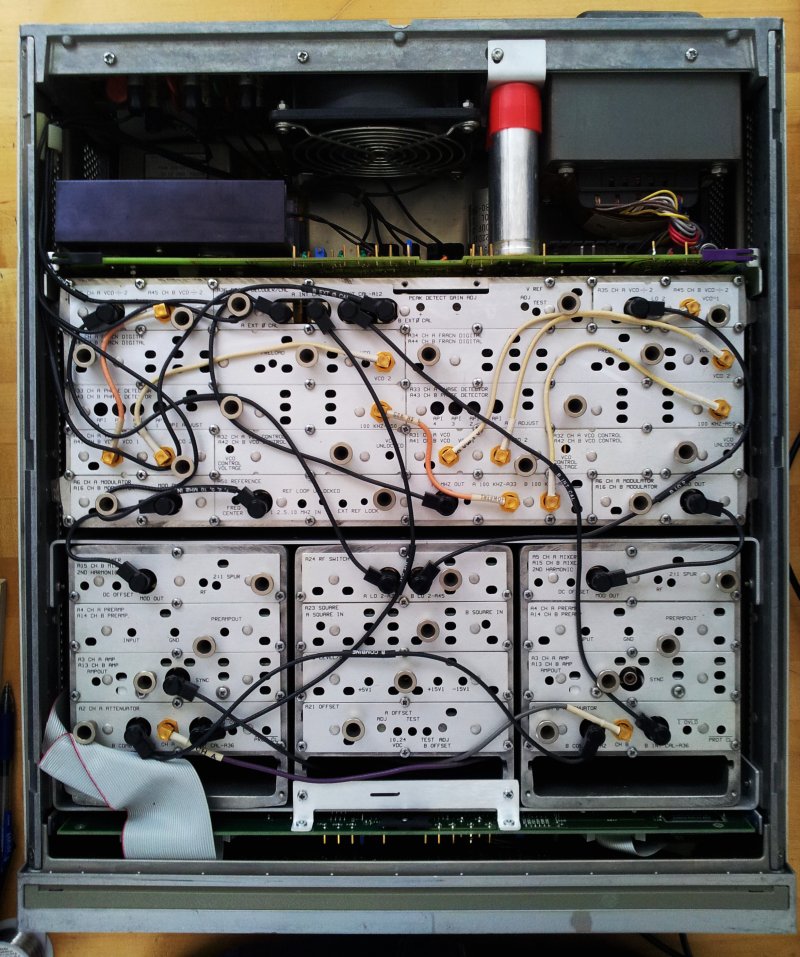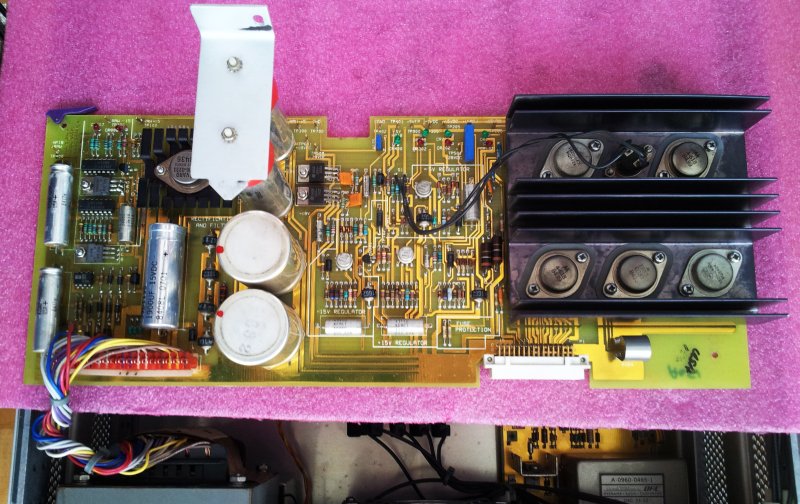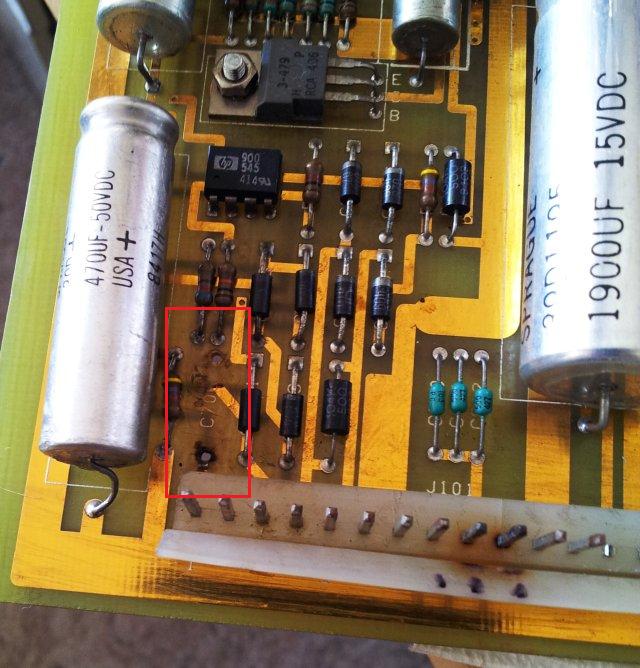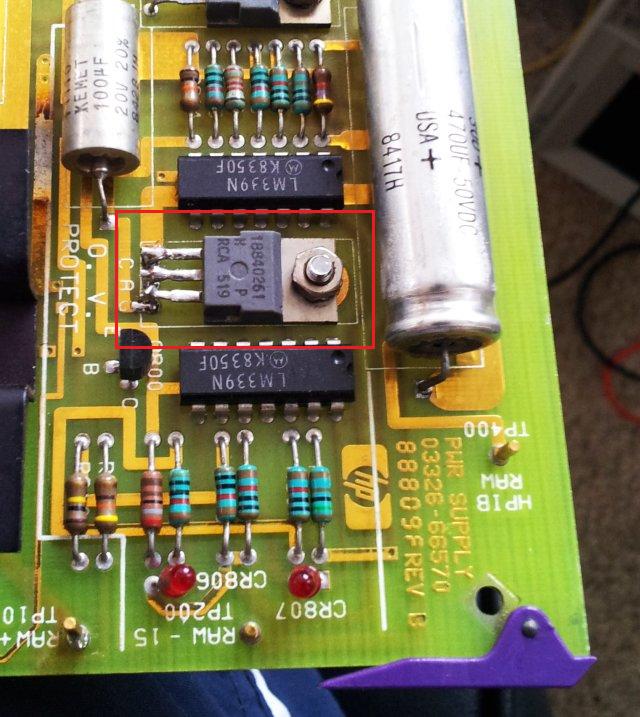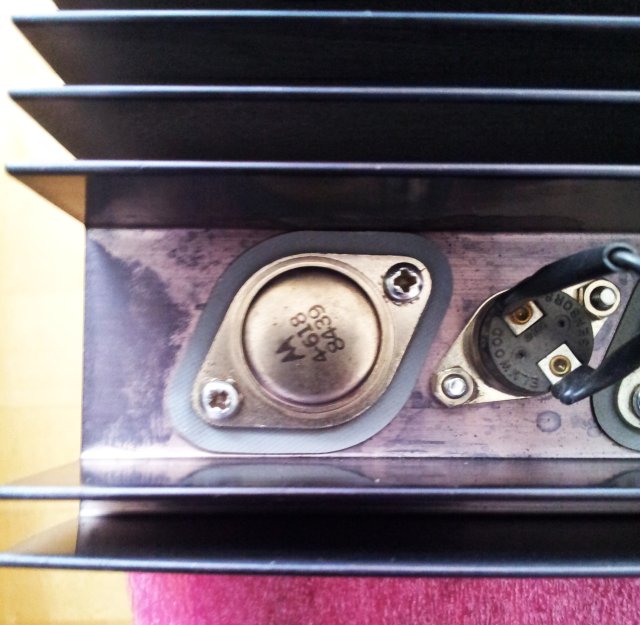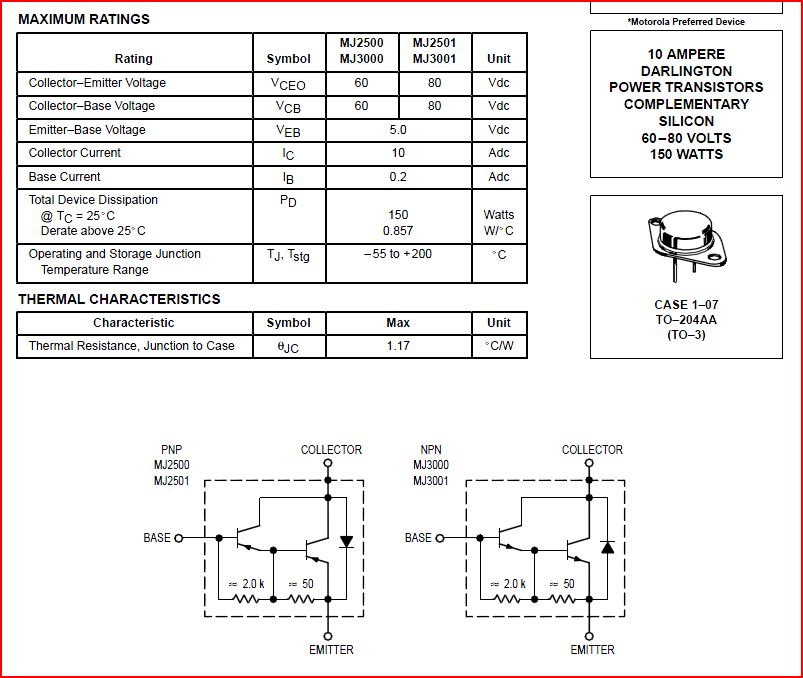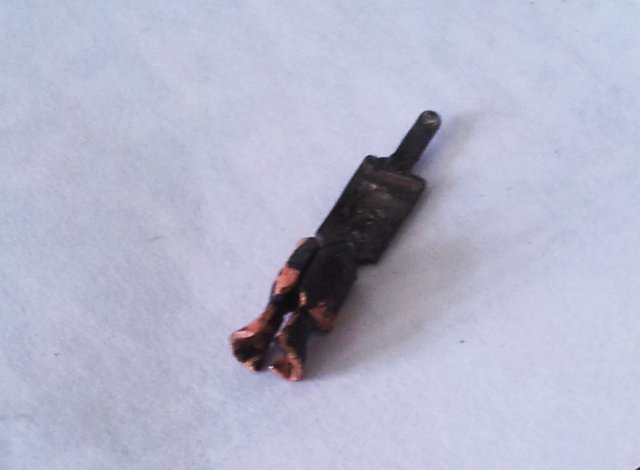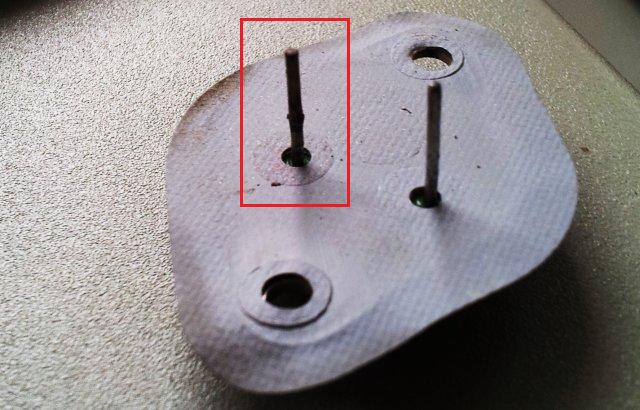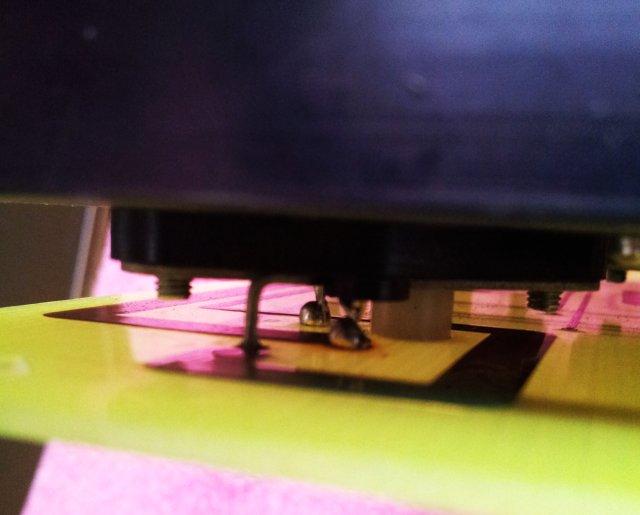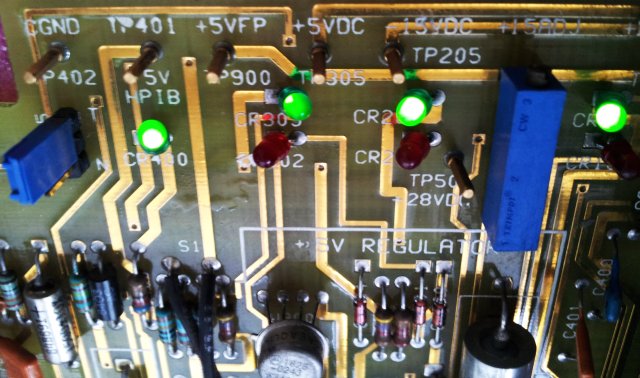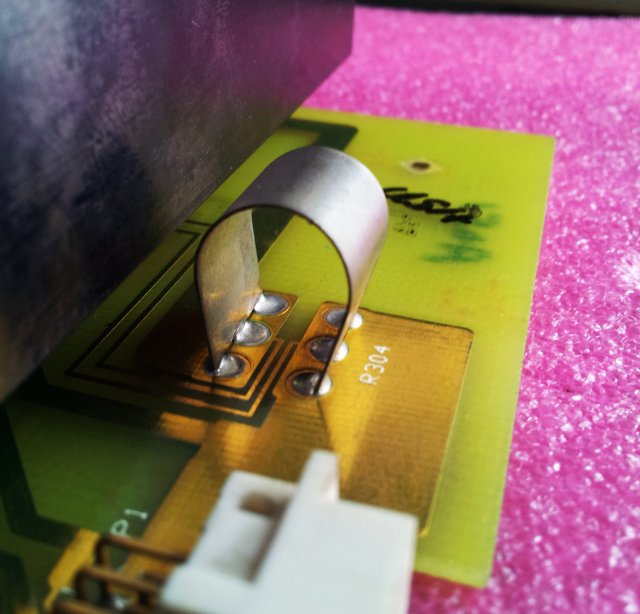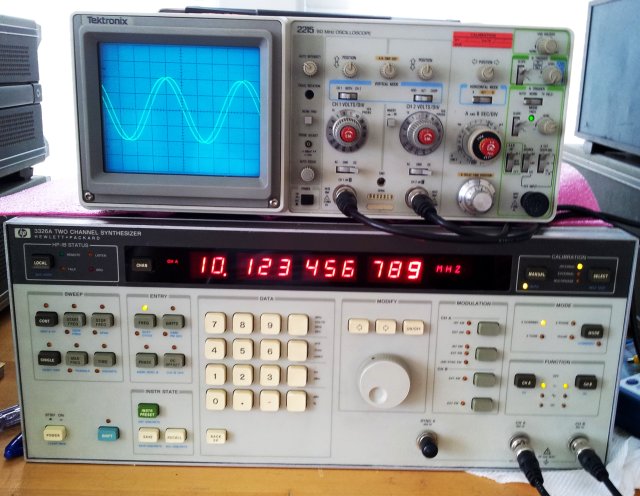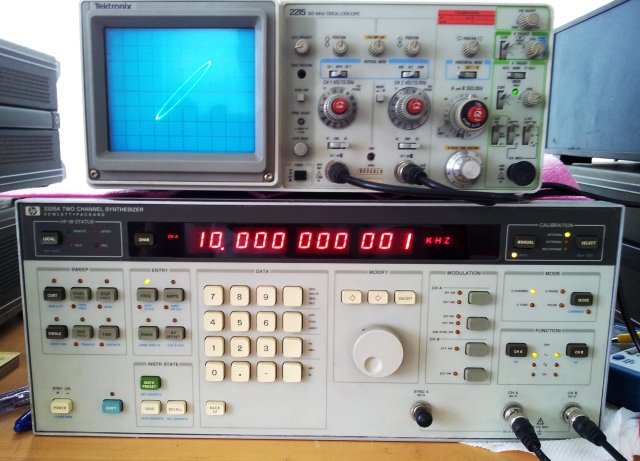Should you ever send in any instruments for repair, please ensure it is properly packaged!
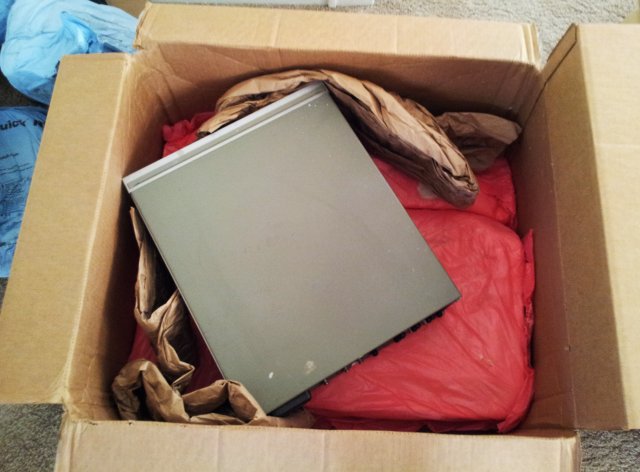
This defective 3326A dual channel synthesizer arrived with no major transport damage, but only due to luck, not due to proper packaging.
First, let’s open up the top panel, and have a look inside. There are two complete synthesizers in the box, similar to the massively popular 3325A design. The synthesizers can be combined, for various two-tone operation modes, phase-shift and PWR modes, two-tone sweep sources, etc. This makes the 3326A a very hand instrument to test all kinds of mixers, receivers, amplifiers.
The outputs are extremely precisely frequency settable, down to 10-6 Hz in the kHz region, and 10-3 in the MHz region… that’s 1 part in 10+9, so you can simulate small oscillator drifts – the frequency stability of the current unit is excellent, it features an option 001 OCXO, +-10-7 per months drift.
The 3326A is also great sources for modulated signals, having all kinds of internal and external modulation sources, including phase modulation. This makes it very useful for PLL characterization, phase detector characterization, or similar tasks.
Well, in priciple. The current unit arrived in dead condition. Plugged it in – a bit of smoke, and bad smell, that’s it.
The faulty assembly: the 03326-66570 power supply.
Another issue: No service manual!!! There are 100s of HP service manuals around, but none of the 3326A!!! Very disappointing – if you have one, PLEASE LET ME KNOW! Your help will be highly appreciated!
Someone must have tried to fix it before, because a few parts are missing – a screw, attaching the capacitors to the case, and a SCR (aka, thyristor), of the over-voltage protection circuit, CR800.
First fix – the ‘smoking’ capacitor, C706. A 100 nF ceramic cap, at the input of the rectifier – actually, running with about 50 V AC, and a cap, rated at 50 Volts… no idea why HP was doing this – typically, they employ a large safety margin, when designing the circuits. Not it this case, and not to the benefit of reliability.
Unfortunately, the cap heated up the traces, and damaged the board – so I removed to loose traces, cleaned it up, and soldered the a replacement cap to the bottom of the board.
The protection circuit – the board was missing the CR800 SCR when received – I can’t find anything wrong with the voltage sense circuits, formed around two LM339 comparators. But there are burnt traces that show that high current must have been flowing throught the SCR at some occasion in the past, possibly due to an over-voltage condition on some of the rails. And the former owner of the device didn’t bother to put a new SCR back in.
Fair enough, put a spare 1884-0261 back in, a 100 V, 4 Amp on-state RMS current. Will replace it later, either once I found out the original part number from the service manual, or once I get hold of a 100 V, 16+ Amp, TO220 device (which rest back in the main workshop, in Germany, while I have to get the 3326A going here at the US East Coast).
While inspecting the power supply, also noticed that the J101 connector – the main connector to the transformer – had several bad solder joints, seems the plating has come off the pins, making bad contact, even leading to head being generated. Resoldered the pins with big blobs of solder, not my usual style, but should work fine here to distribute the current more evenly.
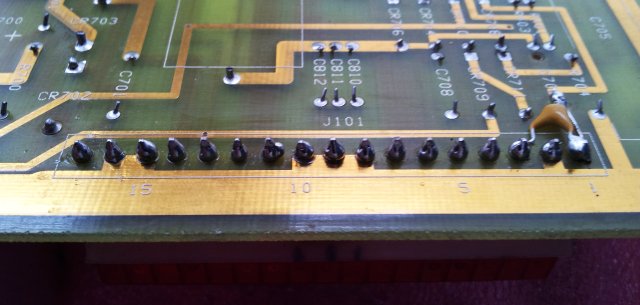
Now, the moment of truth…. switched it on, and, all rails are up (you can use the little jumper on the board to operate the supply outside the slot – don’t destroy your instrument by putting back in an untested power supply assembly!).
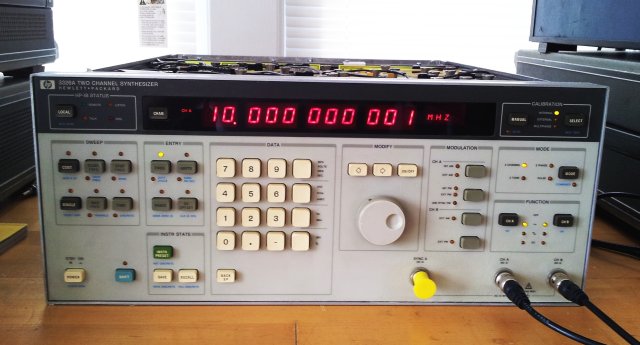
…it works! Seems we have won, and still some years to go before this instrument will turn into a paperweight, or, well, a doorstop.
As usual after repair, now, running it for a few hours, switching it on and off a few times – checking the stabilty of the output. Not so good news. Sometimes, instabilities show up, and after a few power cycles, it doesn’t come on any more. Then, it comes on again – an intermittent fault! Never good!
Good advice, in case of intermittent faults – let them develop into permanent faults, and in this case, watch the ‘power good’ LEDs of the various rails.
After a bit of probing, knocking, knocking, pushing – found the issue to reside with the 5 V rail. Even without the service manual, a few tests of the voltage regulator shows that the regulator working, what is not working, is the series pass transistor, a HP 1854-0618. This is a re-branded Motorola MJ3000.
A dead transistor that has intermittent function, very strange. Look at the way it is mounted – using a pcb-mount TO-3 socket. Let’s remove the transistor, and check it out…
Now, things are clear – the 5 V rail is quite high current, and the pin-socket combination (for the emitter pin) just isn’t made for it, well, at least not after 30 years of service, oxidation, and so on. One day, it must have heated up quite a bit, judging from the state of the contact. No way to fix this by just cleaning it up – the contact is all soft, and won’t provide a low resistance path. So, I removed it alltogether, and soldered in the pin, using some tin plated copper wire.
Also noticed some discoloration of the via at the emitter pin – the heat caused some damaged, but not too much, and also here, added a large blob of solder, to ensure good contact both sides of the via.
Talking about the obvious engineering weaknesses of the power supply, also some good things – it actually has several protection circuits, all rails are protected by heavy Zeners (which will short when overloaded), plus the active monitoring-SCR circuit.
For the 5 V rail, even the current is monitored, by this rather fancy shunt.
Gave it another few hours of run-in, and numberous power cycles, still, all is working just fine.

